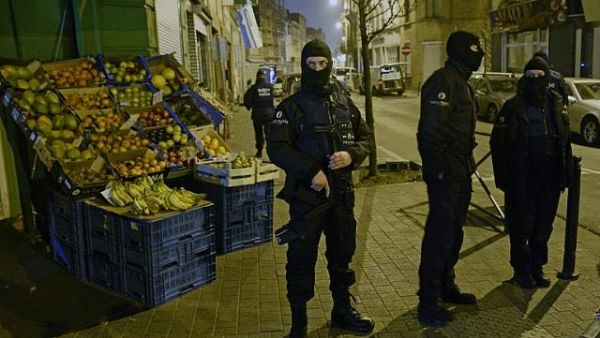This is Part I of a three-part series exploring ISIS returnees in Belgium, France and the United Kingdom.
It’s strange to think that at one point, Belgian authorities were actually happy to see a large number of young people abandon their European homeland for the battlefields of Syria. This was back in 2012, and many of those leaving had been irritants to Belgian police for their petty crime and anti-social behaviour. Their departure actually led to a drop in the crime rate.
But soon, Belgium’s security forces realised that their loss of one problem would soon be replaced with a much greater one. Those young wannabe jihadists were far from guaranteed to stay in Syria. And fears began to proliferate of what they might do on Belgian soil when they returned.
Fast forward a few years, and Belgium has learned a lot, although that learning has sometimes come at a tragic price. The country’s policy towards returning jihadists has evolved, and it has security lessons other countries could learn from. But Belgium also has a long way to go in tackling the problems that helped drive many young people towards ISIS in the first place.
Belgium has one of the highest numbers of “returnees” from ISIS of any European country, although the number of those who returned is still a lot lower than the number of people who left. Belgium’s counter-terrorism centre knows of 413 Belgian individuals who succeeded in joining jihadist groups in Iraq and Syria. They were overwhelmingly young men, in their twenties, thirties, or occasionally teens.
The vast majority of them joined ISIS. And 125 of those fighters are known to have returned. One was killed in a car accident. However, another nine among that number died while perpetrating the Paris and Brussels attacks. And those nine exemplified the worst case scenario for Belgium, as it asked itself what to do with the other 115.
But Belgium had experienced the pain that returnees could cause over a year before the infamous attacks in Paris and Brussels. In May 2014, Mehdi Nemmouche, a then 29-year-old French citizen, stormed the Jewish Museum of Belgium in the capital Brussels with a Kalashnikov, and killed four people before fleeing the scene.
He was arrested in France a week later, and two other suspects were also detained. But this was not the first time Nemmouche had committed brutal murders. For he had travelled to Syria in December 2012 to join the nascent Islamic State, where he remained until returning to Belgium in March 2014.
Whilst in Syria, he allegedly guarded foreign hostages, including the journalists Steven Sotloff and James Foley, who were later beheaded for ISIS’s propaganda snuff movies. Another journalist who was held hostage and later released, French national Nicolas Hénin, said that Nemmouche had taken obvious pleasure in torturingboth Syrian and foreign prisoners. Nemmouche was made to testify for a French judge in Brussels in early July 2018, in a separate trial for his role in the hostage taking of four French journalists in Syria in 2013.
The case of Mehdi Nemmouche is interesting because he exemplifies many of the characteristics that are common, if not universal, among foreign fighters and returnees in Belgium. And some of these characteristics have presented serious challenges to the Belgian government. For one thing, Mehdi Nemmouche was well-known to the police long before his induction into radical Islamism. He had twenty-two criminal offences to his name by the age of twenty-two, including armed robbery, vehicle theft and assault.
Pieter Van Ostaeyen, a researcher at Leuven University who has extensive experience tracking Belgian Islamist movements, told Al Bawaba that prior criminal backgrounds are a widespread, if not ubiquitous feature among Belgian jihadists:
“In the famous Sharia4Belgium group, for example, there were members of the group with a history of minor misdemeanors like theft, burglary and drug dealing. The same goes in general for the network around Jean-Louis Denis, Resto du Tawheed. There is one network that can easily been seen as network of gangster-jihadi's, the Zerkani network. The Zerkani network financed its recruits going to Syria or Iraq directly with crime-money. They stole from tourists in Brussels but some members had a past in organised crime.
Abdelhamid Abaaoud, Salah Abdeslam, the Abrini-brothers all had a past in crime. The Bakraoui-brothers had a more violent past, one of them spent a few years in prison after he tried to rob an exchange office in Brussels on broad daylight, when the police intervened, Bakraoui and his accomplices fled in a car while opening fire at the police with a Kalashnikov.”

People gather to mourn the victims of the 2016 Brussels Attack (AFP)
There are several reasons that an individual’s past criminal history might push them towards the life of a jihadist, and that trend presents worrying considerations. Though it is wrong to make a direct link between poverty and terrorism, deprivation self-evidently makes for a sense of frustration. This is particularly so for Belgians of north African heritage, who are vastly overrepresented among the country’s poorest. Half of Belgium’s community of Moroccan origin is classed as living in poverty, while for citizens without migrant heritage the poverty rate is 15%. As a result of structural poverty and other forms of discrimination, second generation Muslims are more likely to live in deprived neighbourhoods where crime is prevalent.
And this trend can make the Belgian authorities’ job more difficult. Criminal contacts and skills are extremely useful for terrorist operations. They help would-be terrorists obtain weapons, cash, and false documents. Crime is also a “push” factor for many jihadists. A person used to breaking the rules will be more ready to embrace extreme behavior when they find a cause that they deem worthy. A religious message can also appeal to those with criminal backgrounds – ISIS has targeted propaganda for people with criminal backgrounds, and their message is one of redemption. And crime can also introduce individuals to networks of people with extreme ideas.
A sense of bonding with a group is critical, and while crime was a common avenue to it for Belgian jihadists, it is far from the only way that people find extremist fellow travellers. Groups of friends develop a quest for meaning together, and take solace in each other’s company. This is especially when they don’t fit in elsewhere.
Professor Rik Coolsaet, a Senior Associate Fellow at Egmont Royal Institute for International Relations and a specialist in Belgian foreign fighters told Al Bawaba:
“A noticeable number of foreign fighters from Belgium have a criminal record and were previously involved in drug trafficking, street violence and other forms of delinquency – street thugs, basically. But – and this is an important ‘but’ – you also have other youngsters joining ISIS, who showed no previous signs of deviant behaviour and who had no criminal record. They were attracted to ISIS’s promises of a new beginning, empowerment, pride, a future, prospects, warm camaraderie, and a feeling of finally being accepted the way they wanted to be. They want to look up to heroes – or to be one themselves.”
And whether it was poverty, crime, glamour or a simple need to belong that led them to Syria, many Belgians went. But, perhaps surprisingly, the majority of Belgian foreign fighters left before ISIS made international headlines by declaring its caliphate. Although ISIS did not then enjoy the publicity it does today, many of its perverse attractions were already there. Rik Coolsaet added:
“ISIS offered them material wealth: a salary and a villa with a pool. And a spouse. A ‘five star’ jihad, in a relatively risk-free location (compared to other jihadi theatres) – at least in the early days when significant numbers travelled to Syria.”
Still, not many got the five-star treatment they were promised, evidenced by the fact that the biggest “wave” of returnees came home before the caliphate was declared. Many, it is believed, came home disillusioned and traumatized. However, others were inspired to go home and commit attacks on Belgian soil. Mehdi Nemmouche was one of these. Yet returnees continued to come home as ISIS’s situation changed. A second wave of Belgians returned home between 2014 and 2015, as foreign strikes on the new “caliphate” intensified. And a third wave began when the caliphate was in serious decline.
Each of these waves of returnees forced changes in policy from Belgium, since authorities were responding to an extraordinary security threat on the fly. In the early days, and – unfortunately – when the largest number returned, Belgium’s response was ad-hoc and uncertain. And the country’s laws were entirely unprepared for the dilemmas now facing them.
Over the course of the four-year period that saw the rise, and the fall of ISIS in the Middle East, Belgium established processes for dealing with returnees, as well as a more muscular legal framework. Belgium’s intelligence service now keeps as close an eye as it can on its foreign fighters in the Middle East. It if becomes clear that one of those individuals is trying to come home, they are arrested in transit, usually in Turkey, and flown back.
Once they are back on Belgian soil, they are taken before judges who must decide whether that individual must be detained pre-trial as a security risk, or whether they can await trial from home. Returnees are now much more likely to be prosecuted for terrorism offences. In the early years, women’s roles in combat were often poorly understood, and authorities had a tendency to assume a lack of agency on their part. Female returnees were treated more as victims than perpetrators and were hardly charged at all. This has changed significantly – now, women are just as likely as men to be charged.
And while analysts have a lot of good things to say about Belgium’s security learning curve, they also believe that the country has still failed to tackle important drivers of radicalisation. Professor Rik Coolsaet continued:
“The main challenge for Belgium (as for the rest of Europe) today lies in the ability and willingness of authorities and public alike to seize upon the respite offered by the collapse of ISIS to address the structural drivers of radicalisation and extremism, including social isolation, marginalisation and alienation, polarisation and the stigmatisation of Islam.
This is all the more important, since the coming years a significant number of prisoners that were convicted for terrorism and related crimes, will be released from prison. The better and sooner we deal with the conducive environment that facilitates jihadi mobilisation and recruitment, the more able we will be to prevent new generations from falling under its spell – and the more lives can be saved.”
There is one more key danger for Belgium, and that is what happens inside the prisons holding the returnees, and the home-grown jihadists. Despite the widely-known scale of the problem, no country is certain of how to deal with prison radicalisation.

Mehdi Nemmouche arrives in court escorted by special forces (AFP)
Prison services must choose whether to house known Islamist recruiters and charismatic personalities alongside ordinary prisoners, or alone. Risks abound either way. If housed among the other prisoners, they may attempt to indoctrinate vulnerable individuals. But if kept alone, or if Islamist prisoners are housed together, there is no chance for them to be exposed to different ways of thinking. And thus when their time comes to be released, they could still present a security risk.
Belgium tends to choose to keep its Islamist prisoners with ordinary inmates, although it subjects ISIS returnees to more stringent security measures. But they also have specialized “de-radicalisation” prison units for the most dedicated recruiters, as well as high-security units for those who present a danger to others, including Mehdi Nemmouche and Salah Abdeslam.
It is a carefully designed system. But no system is perfect, and in this scenario, imperfections can be lethal. On May 28th2018, a young man named Bejamin Herman stabbed two female police officers to death, and then turned one of their guns on a passing bystander. Herman had been given a two-day leave from prison for a work training program, and within hours of leaving prison had committed a triple murder.
Benjamin Herman was from a middle class family from the French speaking part of Belgium, and was in prison for assault and drug offences. Whilst incarcerated, it appears that he became enamored with radical Islamism thanks to the influence of charismatic fellow prisoners. But prison security had noted that Herman was cause for concern, and yet he was still allowed to leave.
The price of mistakes is horribly high when prisons make difficult choices. However, this should not be taken to mean that solitary confinement is a better option. It could be a worse one.
Pieter Van Ostaeyen said: “I don't think locking up jihadists in solitary confinement is the best solution. More has to be done in disengaging them from the violent ideology they adhere to.”
It was a very social desire for belonging, and for acceptance, that drove most people to the jihadist cause in the first place. Further isolating them will leave them in a worse, not better condition to rejoin society when their prison terms end.
Belgium is now much better prepared to deal with the immediate threat presented by ISIS returnees. But whether it is prepared to respond to those who feel alienated in their society is a different question. The answer to it will be critical to its future security.
The views expressed in this article do not necessarily reflect those of Al Bawaba News. Part II here.







